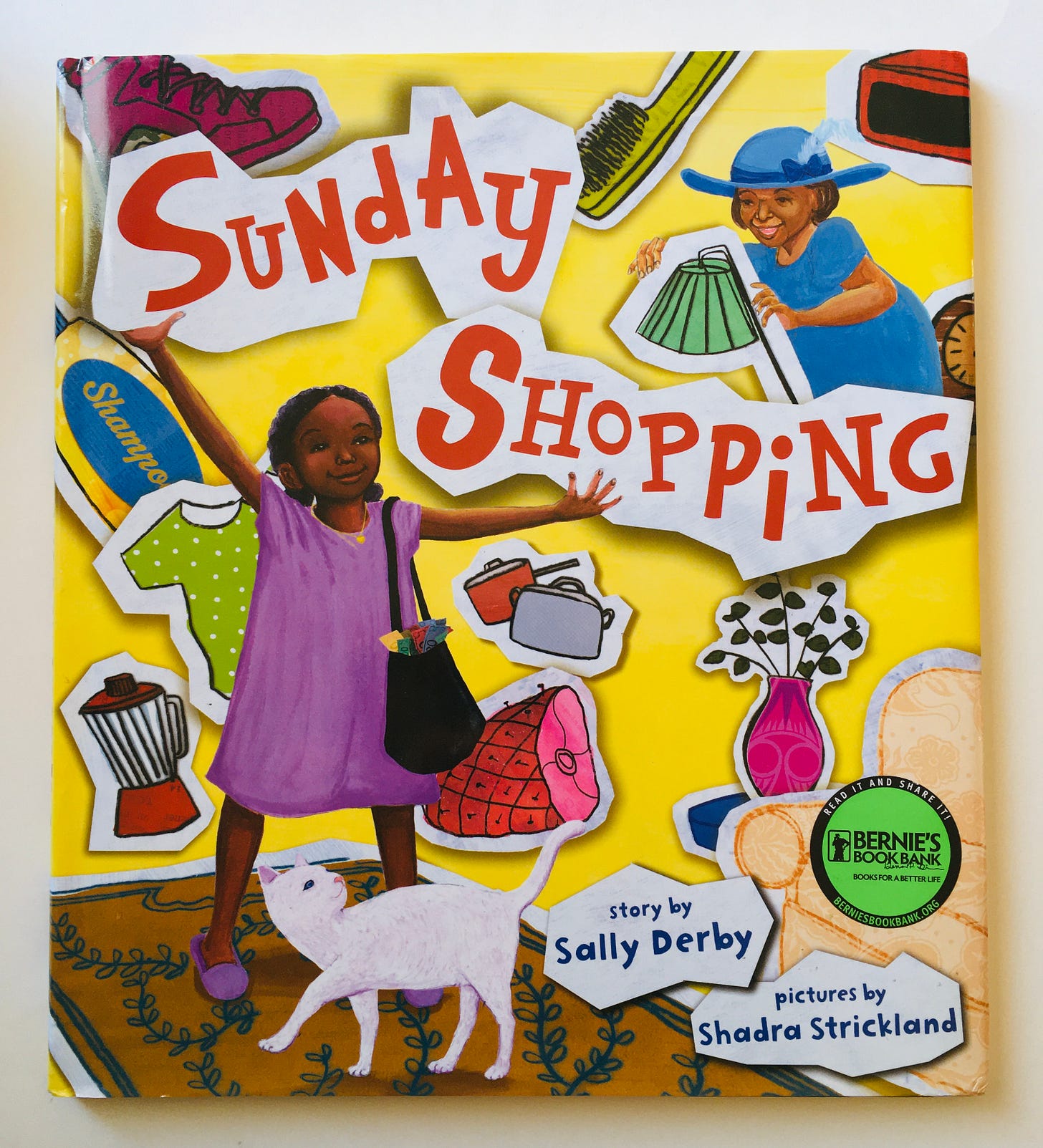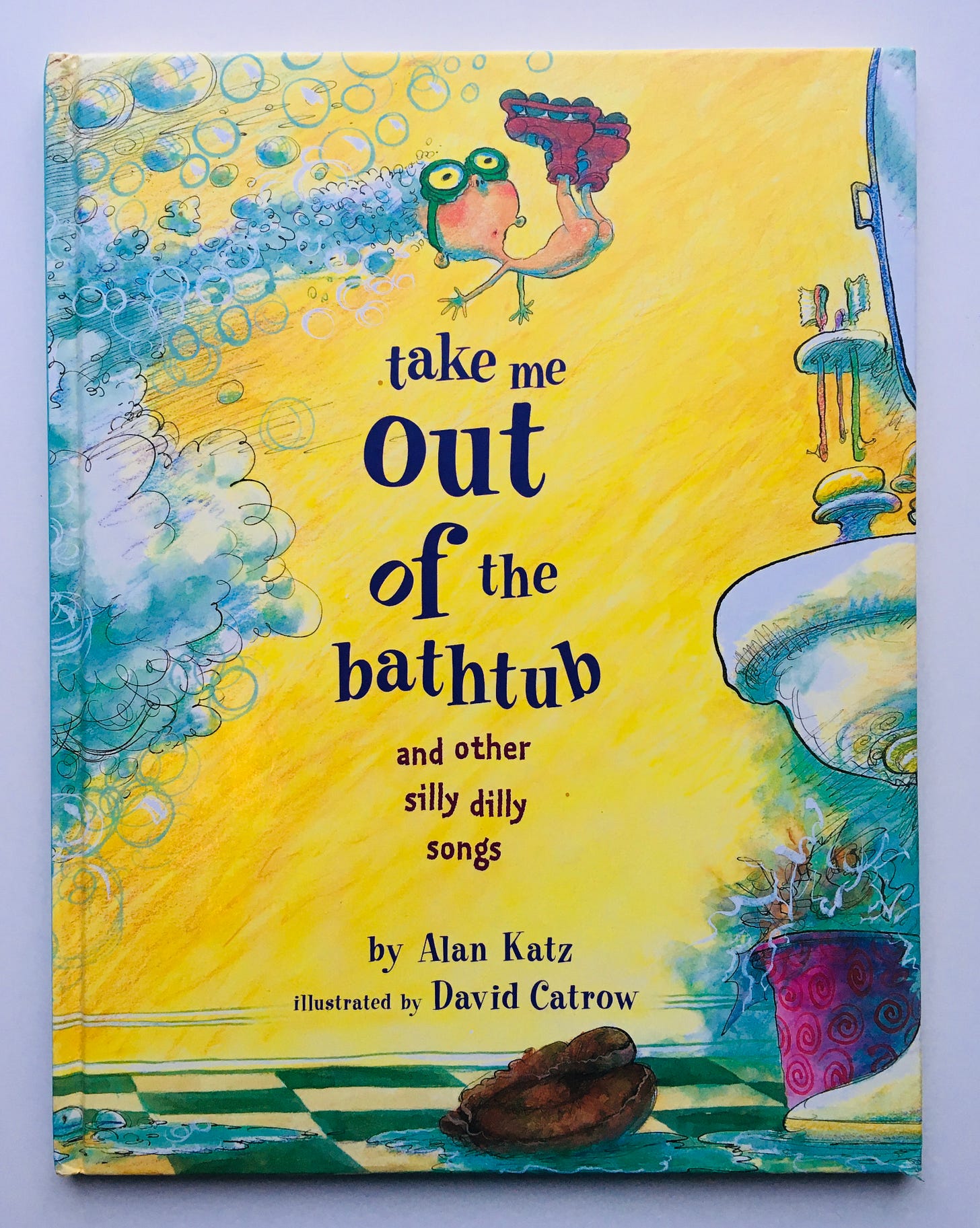Good morning! Thanks for being here.
I have an ask before we get started today:
Building a newsletter is a long-term, long-game project — there is a Jane Smiley quote, “I believe that you either love the work or the rewards. Life is a lot easier if you love the work,” and I really and truly love the work. And I am grateful for every single one of you — whether you open this newsletter every week, a few times a month, or once in a blue moon.
Here’s the thing: I created this newsletter, in part, because I wished for something like this in my own inbox. I want it to reach a lot of people. Not so that I can make money from subscriptions (the money I make from subscriptions covers the cost of the books I review and that’s about it), but so that I can inspire, support, and serve as many people as possible, because I believe to my core in the importance to reading to children.
But I don’t know more people than I know, you know?
My ask today is for your help: will you forward this to someone? I even wrote some copy for you, which will open up in the email program of your choice:
Some people that might like this newsletter:
Grandparents/aunts/uncles/other extended family (helpful for ideas for gifts!)
Your kid’s teacher, coach, school librarian, reading specialist, or therapist (you can tell how we roll in this house)
Your daycare provider/support folks when it comes to looking after your child/ren
The children’s librarian and staff at your local library
Your coworkers who are caregivers to young children in any capacity
People you “know” on social media
Anyone in your life that works with children, even if they don’t have them (plenty of your fellow readers don’t have them!)
To those of you who have already done this for me, once or on more than one occasion: I deeply appreciate your support. I have built the foundation and applied the mortar for this newsletter, but you have helped me raise it brick by brick.
Thank you so much for your help. And as always, thank you for being here.
The Bear and the Piano by David Litchfield (2015)
A few years ago, when I was saying hello to one of my local librarians (while no doubt trying to manage a teetering pile of books to checkout), she said, “I have a new favorite picture book that you just have to read.” Since I will check out literally any title that Melissa tells me to, I immediately put it on hold. (If you have since guessed that the book was The Bear and the Piano, you are correct. And Melissa was right. But then, that’s not a surprise.)
This tender story of a piano-playing bear is a quiet one, but it’s so moving it might sneak up on you. One day in the forest, a young bear cub finds a piano — something he has never seen before, something that makes an awful sound — but it’s just that moment when his life really begins.
He practices. For years and years, he practices, until the sounds that come from the piano are beautiful, and the bear feels so happy when he plays. Eventually, he draws a crowd, one of bears but also humans, and when the humans invite the bear to the city to play his piano in front of hundreds of people, he accepts.
He goes to the city, and it’s everything he’d hoped it would be — he’s famous, he’s admired, he wins awards, but he misses his friends and his home. So he decides to return. When he does, he finds that no one is there, and he worries that they have forgotten him or are angry that he left them behind. Then he discovers his old piano in the woods, only this time, it’s covered with photos of him from magazines, press clippings — a visual collection of all the love that his bear family and friends have for him. He realizes that no matter where he goes or what he does, they will always be there for him, and so he begins to play the piano for them, knowing this time that he is playing for the most important audience of all.
Litchfield’s mixed-media illustrations are just as lovely as this touching story, full of the message that we are loved, no matter what we do, just as we are: no one ever gets tired of hearing that, not even bears.
Grandpa’s Girls by Nicola I. Campbell, illustrated by Kim LaFave (2011)
I am a sucker for any well-done children’s books that highlight the special nature of the grandparent-grandchild relationship — my own special relationship with my grandparents is one of the greatest gifts of my life — so when I first got my hands on this title about a little girl and her cousins visiting their grandfather’s farm, I was thrilled to see a fresh, family-history focused tale from an Interior Salish perspective.
Here the reader follows this four-some through all their explorations on the farm: digging around in the root cellar near the yuxkn, a small outbuilding their grand-auntie used to live in; swinging on a rope through the loft and out the window of the barn; feeding crabapples to Grandpa’s Appaloosa; asking to hear funny stories about Yayah, their deceased grandmother; turning down Rocky Mountain oysters in favor of far-less-disgusting candy. LaFave’s ink drawings, digitally colored, lend a lot of life and movement here and help us see what the girls are alluding to when they mention bits and pieces of their family’s story — Grandpa’s WWII service, the fact that the elders in their family speak Ntlaka’pamux (the notes in front matter explain that it’s the language spoken by Interior Salish people, also known as Thompson).
Campbell, who is Interior Salish and Métis, offers her specific cultural knowledge here while also telling a tale that could be about any American, of any descent — and that’s what makes this such a remarkable book: it shows that Native Americans are still here, still very much alive and well, and these types of books are indispensable.
(If you’re wondering why they’re indispensable, I wrote about it last year.)
Sunday Shopping by Sally Derby Miller, illustrated by Shadra Strickland (2015)
Speaking of books that highlight the grandparent-grandchild relationship: Sunday Shopping represents this theme at its best.
Strickland, probably best known for her heartfelt family stories told from a childlike point of view, brings us into the world of Evie and her grandmother, who together, every Sunday night, put on their nightgowns, climb into bed, and “go shopping.” Evie holds Grandma’s big black purse, gets her scissors and tape ready, and Grandma opens the newspaper: then the fun begins.
With paper money, they “shop” the ads — buying ham and rye bread, a roomful of furniture, a beautiful jewelry box (to hold the necklace Evie’s mom gave her the day her mother left for the Army), new clothes for spring, a “Super-Improved Microwave Oven,” a bunch of flowers. When they’re finally finished, they’re tired, and it’s time for bed, but they both look forward to next Sunday, when they’ll “go shopping again.”
It’s never explained whether Evie and Grandma shop this way because they can’t afford to spend real money or this is just a fun, make-believe game, but it doesn’t matter — Derby’s watercolor, acrylic, wax pencil, and digital illustrations show how much tenderness exists between these two, and the story makes it clear: the comfort of this ritual is what’s important, and the love between these two is all that really matters.
Take Me Out of the Bathtub and Other Silly Dilly Songs by Alan Katz, illustrated by David Catrow (2001)
If you’re struggling to introduce your children to poetry — or, somehow, still don’t believe me that poetry matters and remain skeptical yourself — might I suggest starting with something easy, silly, and enjoyable?
This is what Katz’s “silly dilly songs” books (the follow-up to this one is I’m Still Here in the Bathtub, along with a Christmas-themed one, Where Did They Hide My Presents?) deliver in spades.
It’s not so much the text itself, which can be rather simplistic, but the fact that each poem is meant to be sung to the tune of familiar American childhood songs — “Cranky Poodle,” an ode to a “crawling, scratching, howling / Scaring people, scaring cats / unrolling paper toweling” dog should be sung to “Yankee Doodle;” another, a tribute to a strange dinner, “Sock in the Gravy,” sung to “Rockabye Baby.”
If this sounds incredibly goofy and you suspect you’ll feel just that way when singing these poems — it is, and you will. (Catrow’s watercolor, colored pencil, and ink illustrations — do you see that little naked butt on the cover? — give you an idea of just how goofy it all is.) But that’s a significant part of this book’s charm: it takes something familiar, adds a ton of absurd humor, and makes it accessible for even the most poetry-averse among us. (The most poetry-averse tend to be grownups, by the way, not kids.)
It’s not high art… but that’s what makes it great.
Thanks for reading today and forwarding this to someone in your circle. May the good you pass on come right back to you 🌀
Sarah








So good to see Nicola Campbell's book here. Your readers might want to check out her other works, too. (I worked with Nicola at UBC, which was a joy!) She's written about residential school--in a picturebook--here in Canada. Not an easy subject. But picturebooks can take on just about anything.
I passed your blog on because I can honestly say I love it. I just wrote a post with several read aloud titles that you might want to take a look at.
https://busybeekindergarten.substack.com/p/whats-the-buzz-7c8?s=w